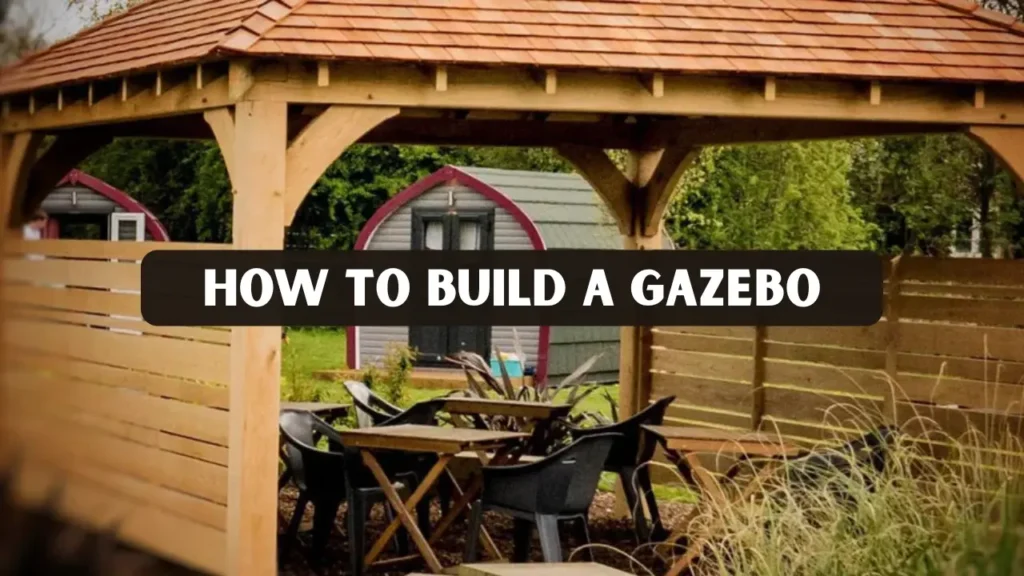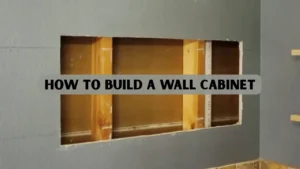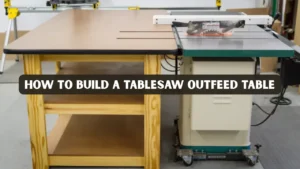Key Takeaways
- Building a gazebo is one of the most rewarding woodworking projects, blending design, precision, and outdoor craftsmanship.
- Careful planning of the foundation, materials, and roof design ensures structural stability and long-term durability.
- Incorporating lathe-turned posts or custom trim can give your gazebo a handcrafted look that highlights your woodworking skill.
- Expect a typical gazebo project to take two to four weekends depending on size, materials, and design complexity.
- Proper maintenance, sealing, and finishing keep your gazebo strong and beautiful after you build a gazebo.
Why Build a Gazebo?
A gazebo adds character and charm to any outdoor space, providing a shaded retreat where you can relax, host gatherings, or showcase your craftsmanship. For those passionate about woodworking, learning how to build a gazebo is an opportunity to combine structural design with creative detailing. From planning the foundation to shaping decorative posts on a lathe, each stage allows you to practice precision while creating something functional and beautiful.
This guide is written from the perspective of experienced woodworkers who understand both the art and science behind durable outdoor structures. Drawing on real-world building experience, professional carpentry standards, and woodworking expertise, it offers an in-depth look into the process of constructing a gazebo that reflects both skill and style.
Planning and Design
Planning is the foundation of any successful project. Before you cut a single board, take time to design a gazebo that fits your yard, your skill level, and your budget.
Determine the Purpose
Ask yourself what the gazebo will be used for: outdoor dining, a garden retreat, or an entertainment space. Your intended use will affect size, roofing type, and whether you need electrical access.
Choose the Shape and Size
- Square or rectangular gazebos are straightforward for beginners and easier to frame.
- Hexagonal or octagonal gazebos have more complex geometry but look more traditional and elegant.
- Standard sizes range from 8×8 feet to 14×14 feet depending on space and intended use.
Select Materials and Tools
Choose durable, weather-resistant materials such as pressure-treated pine, cedar, or redwood. You’ll need a circular saw, miter saw, drill, post hole digger, level, and if desired, a wood lathe for decorative elements.
Plan the Budget
Budget realistically. A small DIY wood gazebo can cost $1,000–$2,000 in materials, while larger or more ornate designs may exceed $5,000. Factor in roofing, hardware, and finishes.
Verify Permits and Codes
Always check with your local building authority for permits. Many municipalities require approval for permanent structures. Building without one could lead to fines or removal orders.
Site Preparation and Foundation
The site you choose affects the durability and stability of the entire structure. Pick a level, well-drained area with enough clearance for the roof overhang.
Steps for Site Preparation:
- Mark the perimeter using stakes and string. This ensures your gazebo layout stays accurate during construction.
- Verify the area is level; adjust by adding or removing soil as needed. A level base prevents structural imbalance and water pooling.
- Call local utility services to check for underground cables or pipes. This step ensures safe digging and prevents costly damage.
- Determine your foundation type. Choose between concrete pads, pavers, or deck blocks based on soil stability and design.
Foundation Options:
- Concrete Piers: Ideal for long-term stability. Place post anchors in wet concrete to secure structural posts. This option offers excellent durability against shifting soil.
- Concrete Slab: Provides a clean, level base for larger gazebos. It’s also easy to maintain and ideal for heavy structures.
- Deck Frame: Works well if your yard is uneven or you want an elevated platform. It allows better airflow underneath and adds a stylish look.
The foundation must be perfectly square and level before installing posts. A poor foundation leads to uneven roof lines and structural stress later.
Materials and Tools
Materials:
- Pressure-treated posts or cedar posts for aesthetics
- Joists, beams, and decking boards
- Roof rafters, ridge beam, and sheathing
- Roofing materials such as shingles or metal panels
- Galvanized or stainless steel fasteners
- Wood glue, sealers, and exterior-grade stain or paint
Tools:
- Circular saw and miter saw
- Power drill and driver bits
- Tape measure, square, and chalk line
- Post hole digger
- Lathe and turning tools (optional for decorative elements)
- Safety gear: gloves, goggles, and dust mask
Step by Step Guide
Step 1: Layout and Foundation Setup
Mark the exact position of your gazebo using string lines. Ensure all corners are square and dimensions accurate. Dig post holes or pour concrete piers to the depth recommended for your region’s frost line. Secure post anchors and allow concrete to cure completely before moving on.
Step 2: Install Floor Frame and Decking
Attach rim joists and floor joists according to your design. Use joist hangers for stability. Check the frame’s squareness by measuring diagonals. Once square, install decking boards with a small gap between them for drainage.
Step 3: Set the Posts
Place each structural post into its anchor and use temporary bracing to keep it plumb. Secure posts with structural screws or lag bolts. If you want decorative turned posts, you can either mount turned posts directly or add turned sleeves later for aesthetics.
Step 4: Build the Beam System
Install beams connecting the tops of each post. Use a level to ensure even height all around. Reinforce connections with metal brackets or carriage bolts for maximum strength.
Step 5: Frame the Roof
This is where precision matters most. Measure and cut rafters according to your design (hip, gable, or pavilion style). Attach them to the ridge beam or central post. Secure each joint with hurricane ties for wind resistance. Once framed, cover the roof with plywood sheathing, underlayment, and your chosen roofing material.
Step 6: Add Railings, Trim, and Decorative Features
Install railing sections, lattice panels, or built-in benches if desired. Add molding, fascia, and finials to complete the look. If you have lathe skills, turn small accent pieces like spindle balusters or roof finials to give your gazebo a handcrafted touch.
Step 7: Apply Finish and Sealant
Sand any rough edges. Apply primer if painting, or use exterior-grade stain for a natural look. Finish with a UV-resistant clear coat or water-repellent sealer to protect against moisture and sunlight.
Advanced Tip: Adding Custom Lathe Work
For experienced woodworkers, the lathe offers endless creative potential. Turning your own posts, railings, or finials elevates the look and gives a personal touch that store-bought kits cannot match.
Lathe Ideas for Gazebos:
- Turned spindle balusters for railings
- Custom finials or decorative knobs for the roof peak
- Rounded post sleeves to cover metal anchors
Ensure that any turned elements used for structural purposes are thick enough to handle load requirements. Always treat turned pieces with exterior sealant to prevent cracking.
Estimated Cost, Time, and Difficulty
- Cost: Expect to spend between $1,500 and $3,000 for a medium-sized wood gazebo using quality materials.
- Time: A team of two to three people can complete a 10×10 gazebo in about three weekends if weather permits.
- Skill Level: Intermediate woodworking experience is recommended, particularly for cutting rafters and handling roof assembly.
- Tip from Experience: Precutting rafters and posts before assembly saves hours and minimizes mistakes. Many professionals prefer pre-staining parts before installation for better coverage and longevity.
Maintenance Tips
- Inspect for loose bolts, cracked boards, or warped wood annually. Regular inspection helps catch small issues before they become costly repairs.
- Reseal or repaint every two to three years depending on climate. This keeps your gazebo protected from UV rays, moisture, and weather damage.
- Keep gutters or roofing clean to avoid water buildup. Standing water can lead to rot, mold, or structural weakening over time.
- Trim nearby plants or trees to reduce moisture exposure. It also prevents falling branches or debris from damaging the roof and structure.
Proper upkeep extends your gazebo’s lifespan significantly. Even small maintenance tasks, when done regularly, protect against long-term damage.
Real-World Example
A small woodworking business in Pennsylvania recently completed a 12×12 cedar gazebo with turned posts and a metal roof. The builder reported that careful material selection and use of premium fasteners prevented warping after the first winter. This real-life experience underscores the value of using high-quality components and proper sealing techniques.
When you build a gazebo, focus on craftsmanship rather than shortcuts. The difference between a temporary structure and a lifelong feature lies in attention to detail and material care.
Conclusion
To build a gazebo successfully, preparation and patience are key. Choose a sturdy foundation, plan for accurate measurements, and invest in quality materials. Whether you are a seasoned woodworker or a passionate hobbyist, this project combines practical carpentry with artistic creativity.
Follow safety procedures, adhere to building codes, and use your woodworking expertise to make a gazebo that enhances your outdoor space for years. By integrating craftsmanship, precision, and care, you’re not just constructing a shelter; you’re creating a legacy of your own design.
FAQs
How long does it take to build one?
Time depends on size and complexity. A small kit can be finished in one weekend, while a fully custom gazebo with roofing and decorative details may take several weeks.
Do I need a permit for building a gazebo?
Yes, most areas require a building permit. Check local regulations before starting to avoid legal issues.
What is the best wood for outdoor use?
Cedar, redwood, and pressure-treated pine are best due to their natural resistance to rot and insects.
Can I build a gazebo on uneven ground?
Yes. Use adjustable post anchors or build a raised deck foundation to level the structure.
How do I keep my gazebo weatherproof?
Apply a high-quality exterior sealant and reapply every few years. Inspect roof shingles or panels regularly for damage.




